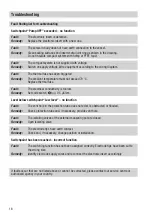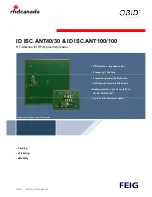
11
Installation
NRGS 11-2, NRGS 16-2
1. Determine required measuring lengths of electrode tips and enter data in
table “Functions”
.
Fig. 3
2. Cut electrode tips
1
,
2
,
3
and
4
accordingly.
The electrode tips
1 2
(low level limiter) must have the same length.
3. Deburr faces of electrode tips.
4. Strip off 50 mm of PTFE insulation from the ends of the electrode tips.
5. Check seating surfaces of threads or flange provided on vessel or boiler standpipe.
Fig. 3
.
Place supplied joint ring
9
onto seating surface of the threaded standpipe or flange.
Fig. 3
6. Use only the joint ring (D 33 x39 DIN 7603-1.4301, bright annealed) supplied with the electrode.
7. Apply a light smear of silicone grease to the electrode thread
0
(e. g. DOW Corning 111 Compound).
8. Screw compact system into threads or flange provided on vessel and tighten with a 41 mm
open-end spanner. The torque required for tightening when cold is 140 Nm.
Table “Functions”
Please enter data.
Function
Function
Electrode tip
Length [mm]
Low level alarm
1
Low level alarm
2
e. g. pump ON
3
e. g. pump OFF
4
Attention
n
Do not subject the electrode tips to shocks and do not bend the electrode tips when
mounting. Use only the supplied joint ring D 33 x 39, form D, DIN 7603, made from
1.4301 (bright annealed).
n
Do not insulate screw-in thread with hemp or PTFE tape.
n
Do not lag electrode body above the hexagonal section.
n
Install compact system only in a vertical position!
n
The specified torques must be strictly observed.
Note
n
For the approval of the boiler standpipe the relevant regulations must be considered.
n
Carry out the installation work in compliance with the installation examples given in
this installation manual.
Tools
n
Open-end spanner A. F. 41 mm
n
Hacksaw
n
Bolt cutter
n
Flat file, cut 2






































